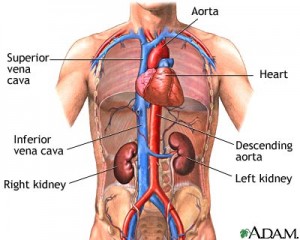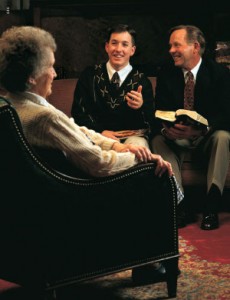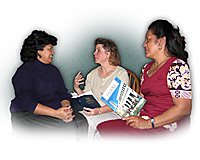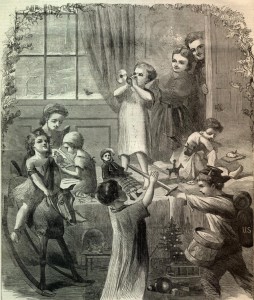Q. Do Mormons believe in heaven?
A. Yes we do. Here are a couple of posts from our archives.
Thanks for asking!
Q. Do Mormons believe in heaven?
A. Yes we do. Here are a couple of posts from our archives.
Thanks for asking!
Q. Can Mormons get cremated after death?
The answer more and more is yes. Please see the article on Organ Donation and the Resurrection.
The real issue is how we respect our bodies, and cremation seems a little harsh to Western sensibilities, but as the Church becomes more global, it has accepted the ways that death is dealt with around the world. The advise is to pray about it, consult with your bishop if necessary, and act as the Spirit directs.
Q. Do Mormons believe in being organ donors? When we die the spirit leaves and the body is left behind. Must you have a body to continue on your journey or can you donate parts to help someone left on earth?
Great question–I’ve been wondering the same thing since I’ve been reading “Stiff–the Curious Lives of Human Cadavers” for book club this month (we have a kind of quirky book club). The answer is: Yes. Mormons can be organ donors.
The best advice I’ve found on the subject comes from Cecil O. Samuelson, who is the President of BYU, a general authority of the church, and a doctor. He stated:
As is the case with many other scientific developments, there are many questions about organ transplantation that have serious economic, ethical, moral, and religious implications. And, as with many other important aspects of life, we have been counseled to study the information, make decisions, and pray for wisdom about our choices. (See D&C 9:7–9; D&C 58:26–28.)
The Church has taken no official position on organ transplants. It seems obvious, however, that organ transplantation does not affect one’s resurrection, since the organ would soon have returned to the basic elements of the earth following death anyway. Whatever happens to an organ following death, we are promised that “every limb and joint shall be restored to its body, yea, even a hair of the head shall not be lost.” (Alma 40:23.)
Since our bodies decompose back into the elements from which they were made in a matter of a few weeks or months (depending upon your burial method–read “Stiff” for lots more information about that), we don’t resurrect from an intact body–rather, we resurrect from the elements that created us, as they gather back together in a perfected form. So whether a person is missing a heart, kidney, liver or lung–everything will be returned and restored to him or her at the time of the resurrection.
So do good with your organs! Spread life around!
This is Elder Samuelson’s entire article on organ donation (just scroll down to the second heading), and this article talks about cremation.
When my family and I moved to south Texas three years ago, we joined a student Christian group for married couples. It was a great little diversion once a month–to get out, talk with others who are devoted to religion and Christ, and to learn about what they believe and (we hoped) let them see that Mormons can be normal people.
One term that came up several times in conversation with them was “fellowship”, which I came to understand as a sort of social network of other Christians (like that group); to lend support, help each other and just provide friendship. I thought at the time, what a great idea, but also, how sad that “fellowship” isn’t built into their churches already. I’m not claiming that Mormons are perfect at fellowshipping, because there are plenty of former Mormons who will say we really stink at it, but it is built in to the Church’s organization. And although there are some places in the church that don’t do it well, I’ve been in many places that do it perfectly, and it is a blessing to everyone involved.

The Visiting Teaching and Home Teaching programs are two complementary programs within the Church that provide “fellowship” from two different groups. Home Teachers are men, anywhere from age 14-110 who are paired up into a companionship (like our missionary program) and then they are assigned usually three or four families within their same ward (congregation) to visit monthly. While visiting them, they teach a spiritual thought from the First Presidency (the Prophet and his counselors), get to know the family generally, and assess any needs or concerns that they have. They are the first point of contact for that family if there is a problem. It may sound like having assigned friends, but it is a lot more substantial than that. Home Teachers are assigned by the leaders of the Priesthood quorums by inspiration and after serious prayer. It’s amazing to see some of the home teaching miracles that happen because just the right person visited at just the right time. While the first visit or two may be a little awkward, especially if you are new to a ward (whether recently baptized, or recently moved), Home Teachers quickly become comfortable friends. Growing up, our family had one home teacher for years. Lanny. He was also our neighbor across the ditch bank, and he took us all out to Chuck-a-Rama every Christmas. He got to know us really well and we got to know him really well. He wasn’t just an assigned friend, he really cared whether we were okay and was happy to help.
Visiting Teaching is about the same thing, only it is women, and they just visit women–not their entire families. Every woman in the Church who is over 18 years old is a member of  the Relief Society, and are assigned visiting teachers. These relationships are some of the dearest in my life. Again, at the beginning it may just feel like assigned friends, but there is a real power in having people visit you in your own home, who really care about you. I look forward to their visits every month. They are also assigned by the Relief Society President after receiving inspiration about how to pair up the companions and who to assign them to. I think this is an especially inspired program because of the inherent social needs that women have. We need to talk! We need friends! If we are new to an area, or to the Church, we need someone to sit by at our meetings. We need someone to call if we are stuck sick in bed. And visiting teaching gives a woman 6 possible friends automatically: their companion (who are often the dearest friends of all), the two visiting teachers who come to them, and the three ladies that they visit. And because it is a church-wide system, there doesn’t need to be awkwardness, or worry that we are stepping on someone’s toes. It’s just a lovely way to “fellowship”.
the Relief Society, and are assigned visiting teachers. These relationships are some of the dearest in my life. Again, at the beginning it may just feel like assigned friends, but there is a real power in having people visit you in your own home, who really care about you. I look forward to their visits every month. They are also assigned by the Relief Society President after receiving inspiration about how to pair up the companions and who to assign them to. I think this is an especially inspired program because of the inherent social needs that women have. We need to talk! We need friends! If we are new to an area, or to the Church, we need someone to sit by at our meetings. We need someone to call if we are stuck sick in bed. And visiting teaching gives a woman 6 possible friends automatically: their companion (who are often the dearest friends of all), the two visiting teachers who come to them, and the three ladies that they visit. And because it is a church-wide system, there doesn’t need to be awkwardness, or worry that we are stepping on someone’s toes. It’s just a lovely way to “fellowship”.
Q. What do Mormons do for Christmas?

From what I have seen and experienced, Mormons celebrate Christmas in just about the same way that the rest of the Christmas-celebrating-world does. We (in the U.S.) have a Christmas tree, stockings, egg nog (not alcoholic), family gatherings, presents, a visit from Santa, caroling, parties, and other unique family traditions.
One thing that Mormons try to do, which might set us apart from the worldly Christmas around us, is to focus on Christ as the center of the celebration. Many families reenact the Nativity at some point on Christmas Eve or Christmas; and we try to emphasize gratitude for our blessings rather than getting more loot.
The First Presidency of the Church (our modern prophet and his counselors) produces a Christmas fireside each year, which is very typical of our attitude toward Christmas. Watch the whole thing by clicking on this link.